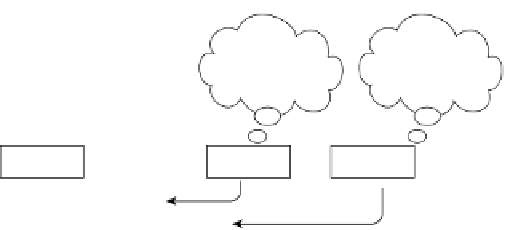Information Technology Reference
In-Depth Information
Figure13-3 The VINES Address Selection Process
Broadcast
any servers?
Client
Server 1
Server 2
1
I'm here.
I'm here.
Client
Server 1
Server 2
2
Server 1,
please assign
me an address.
Client
Server 1
Server 2
3
Your address is
Server 1, Node 8001.
Client
Server 1
Server 2
4
Dynamic address assignment is not unique in the industry (AppleTalk also uses this process), but it is
certainly not as common as static address assignment. Because addresses are chosen exclusively by a
particular server (whose address is unique as a result of the uniqueness of the hardware key), there is
very little chance of a duplicate address (a potentially devastating problem on Internet Protocol [IP] and
other networks).
In the VINES network scheme, all servers with multiple interfaces are essentially routers. A client
always chooses its own server as a first-hop router, even if another server on the same cable provides a
better route to the ultimate destination. A client can learn about other routers by receiving redirect
messages from its own server. Because clients rely on their servers for first-hop routing, VINES servers
maintain routing tables to help them find remote nodes.
VINES routing tables consist of host/cost pairs, where host corresponds to a network node that can be
reached and cost corresponds to a delay, expressed in milliseconds, to get to that node. RTP helps VINES
servers find neighboring clients, servers, and routers.
























